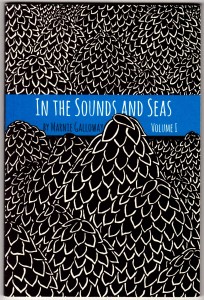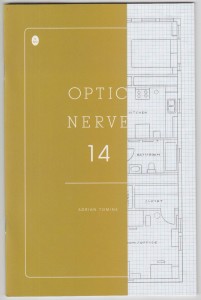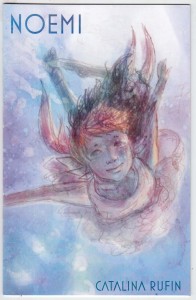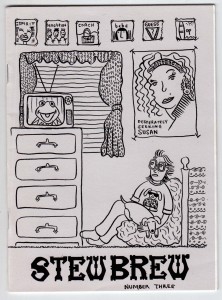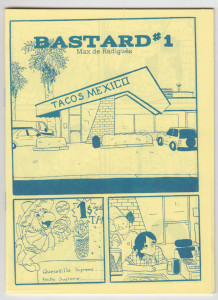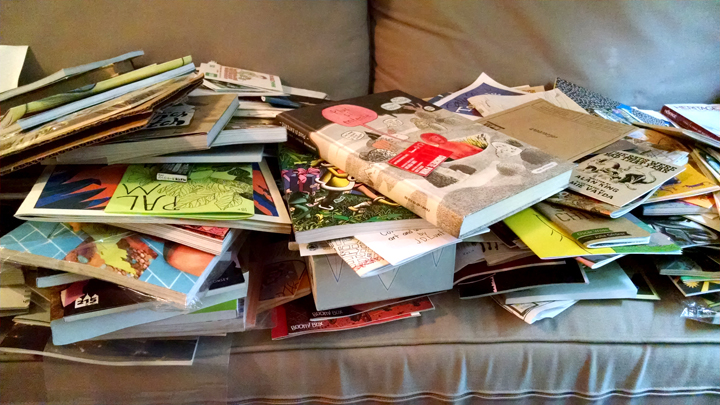 The to-read pile looms – graphic novels, anthologies, mini-comics, floppies, journals  — there’s a couch under it somewhere, if I remember correctly.  I must climb this mountain one comic at a time…
The to-read pile looms – graphic novels, anthologies, mini-comics, floppies, journals  — there’s a couch under it somewhere, if I remember correctly.  I must climb this mountain one comic at a time…
Last month, I read comics by Marnie Galloway, Adrian Tomine, Heide Solbrig, Ben Doane/Olivia Li/ Jamie Koh, Catalina Rufin, M.R. Trower, Kelly Froh and Max Clotfelter, Max de Radigues, Keiler Roberts, and the Kimball Anderson-edited anthology “Inaction Comics.”
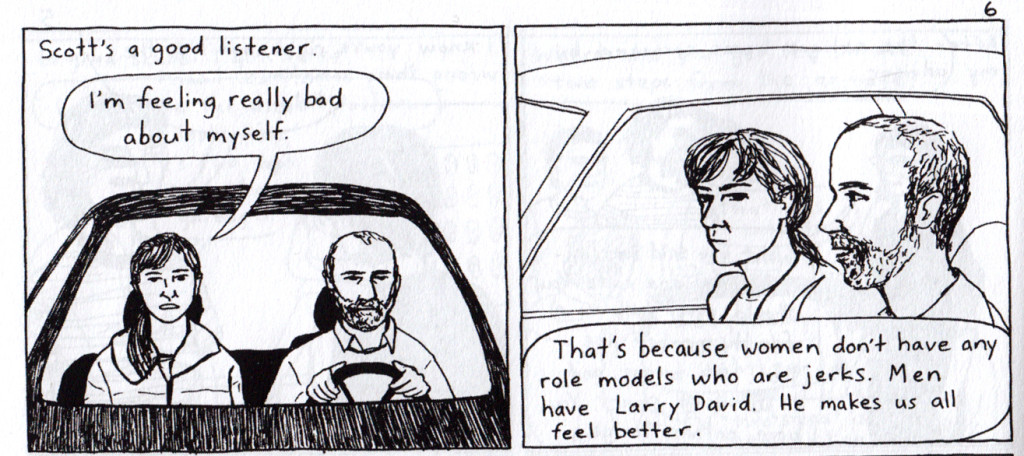
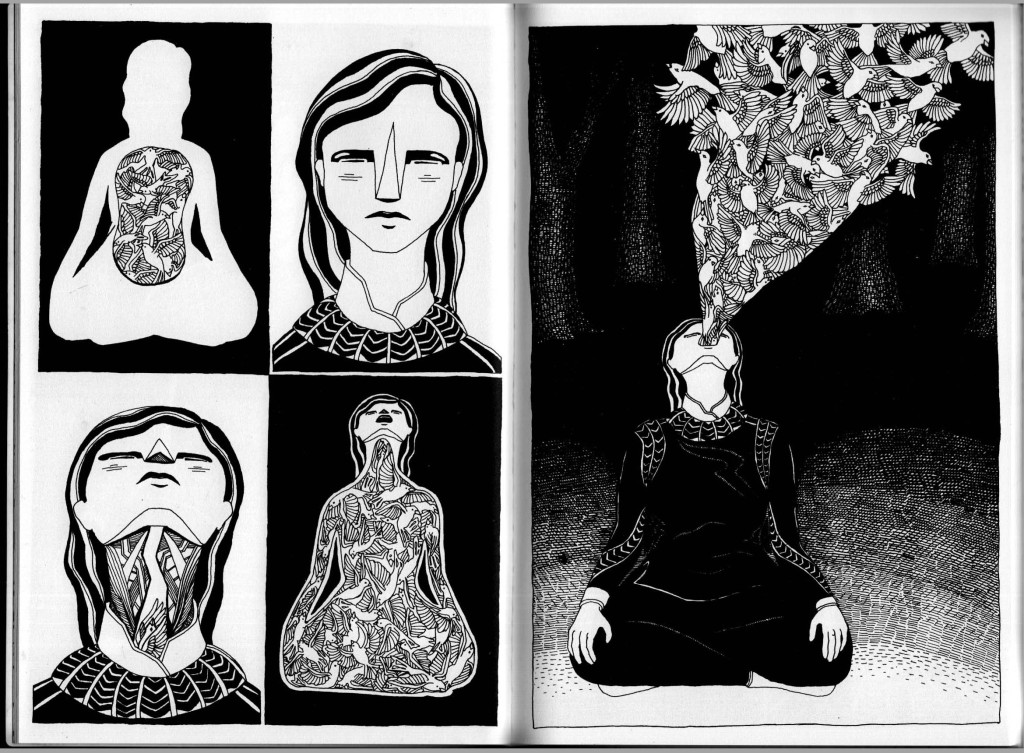
Optic Nerve #14 by Adrian Tomine. I’ve always had mixed feelings about Tomine, whose work has always seemed solid, but never original (my first impression back in the late 80s was that he was shamelessly imitating Dan Clowes). To me, he’s the ultimate middlebrow comics artist — I don’t mean that as badly as it sounds, though. His work is completely cut off from the medium’s pop culture roots, unlike high-lo his peers, Clowes, Burns, Hernandez. But neither is it arty or difficult: Tomine is a craftsman, asolid, intelligent creator of realistic fictions in comics form, whose art is never exciting, but generally attractive and tasteful. I’m glad to have someone like this working in comics, and I’d never miss an issue of Optic Nerve. The problem I have with his stories though, is that he stays locked in a sad, downbeat, pessimistic depressive mode. Burns, Clowes, Ware, Harkham, Crane, Sturm and the like all spend a lot of time in sad-land too, of course, but Tomine doesn’t seem to write in any other register. His characters are obnoxious, selfish jerks. I don’t mind reading stories about jerks, but there’s something increasingly sour about Tomine’s worldview. The lead story in this issue, “Killing and Dying,” about a widowed father’s attitude toward his daughter’s aspirations of becoming a stand-up comedian, exemplifies this sourness. I appreciate Tomine’s deliberate and generally convincing development of the characters and situation, but I was left wondering what was the point; I felt I’d had my nose rubbed in human misery, failure and delusion — just for the hell of it? I much preferred the second piece, “Intruders,” in which a lost young man who lives vicariously by breaking into his old apartment every day: it’s a more imaginative story, throws in some action and suspense, and actually doesn’t end on an entirely depressing note. Finally there’s a one pager, in which Tomine makes himself a character, reinforcing his sad sack, grumpy young-ish man persona. Oh well. Keep up the good work, Adrian.
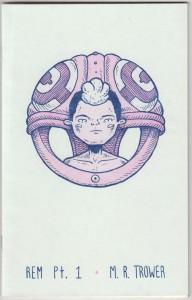
REM Pt.1 by M.R. Trower. A coming-of-age, misfit-finds-others-like-self-themed dystopia sci-fi mini. The story works and nice black and white page designs with a decorative bent.
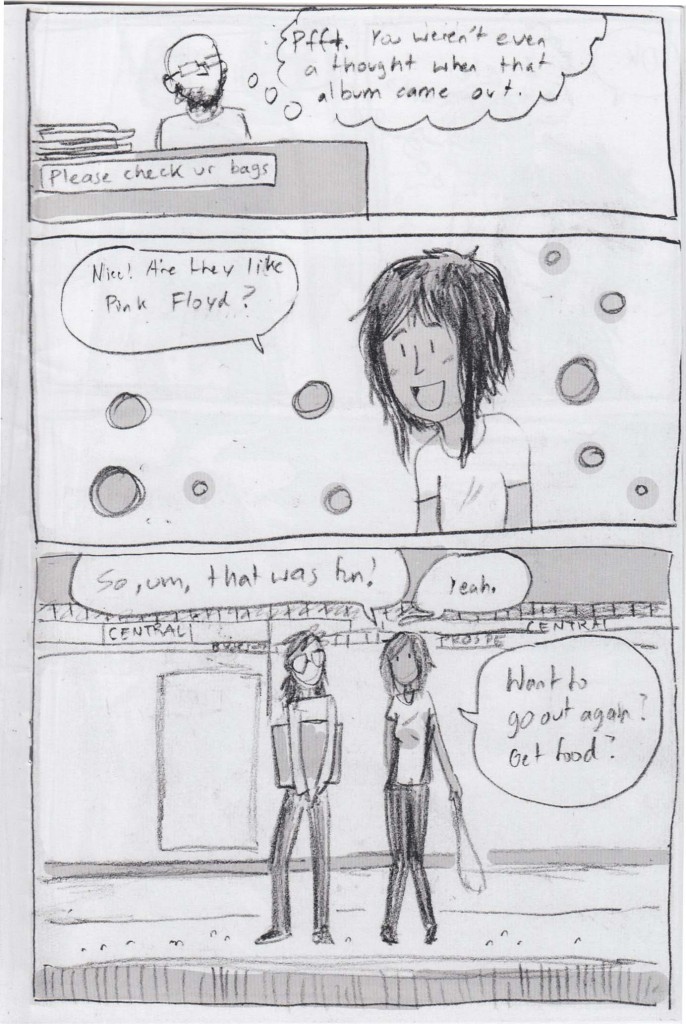
 Strewbrew number 3.  How did this mini from 2008 end up on my reading pile? No idea.  A collaboration between cartoonists Kelly Froh and Max Clotfelter, trading off pages, auto-bio about their relationships with television as awkward adolescents.  Embarassing and funny.
Bastard by Max de Radigues. One of those cheap little Oily Comics minis, where the cheap zine-y aesthetic is part of the message — they splurged on this one and printed it on yellow paper! First chapter of a hard-boiled road-crime story which has that “70s b-movie” feel that Katie Skelley and Chuck Forsman go for too. Cheap motels, desert landscape, duffle bags full of money — all it’s missing is rack-focus and lens flare. Cool. But de Radigues is Belgian. So even cooler. Nice to be reminded that you can make an action movie on yellow photocopy paper.
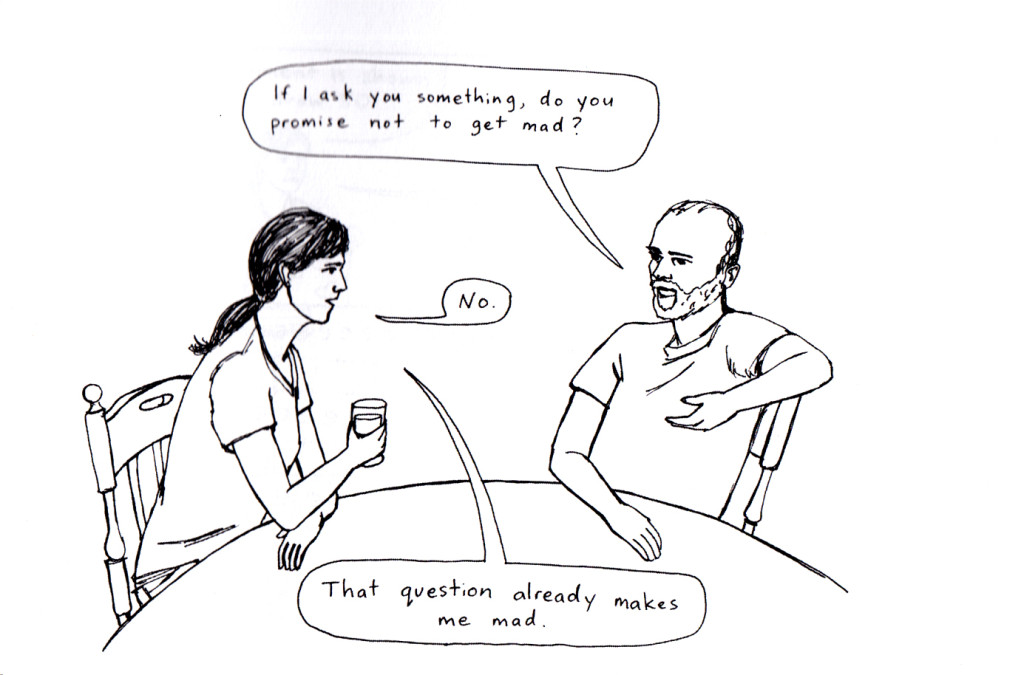
Powdered Milk by Keiler Roberts. There are plenty of auto-bio comics that mine the minutiae of every day life, for humor and poignance. The trick, it seems, is the fine-ness of the creators’ perceptions, the ability to recognize the odd and meaningful moments and capture them. This is what sets Keiler Roberts’ pieces apart (this is a collection of short stories, mostly one-pagers, that originally appeared in her mini-comic series of the same title). An arc emerges from the collection, passing through childhood memories, motherhood, depression and other mental and perceptual difficulties, and things-getting-better.
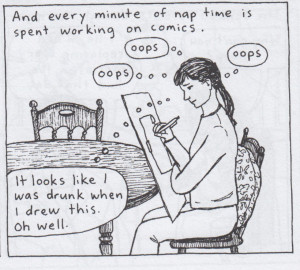 Creativity and productivity are themes that run through it all. She has an excellent sense of timing and dry storytelling (quite reminiscent of Gabrielle Bell, whom Roberts rivals for humor and perceptiveness, though Roberts’ drawing is cruder). A very affecting book.
Creativity and productivity are themes that run through it all. She has an excellent sense of timing and dry storytelling (quite reminiscent of Gabrielle Bell, whom Roberts rivals for humor and perceptiveness, though Roberts’ drawing is cruder). A very affecting book.
The Dandelion King: Love and Loss while waiting in the Gas Line by Heide Solbrig. 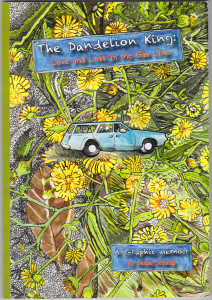 The long-awaited debut graphic novel by my friend Heide Solbrig, and it does not disappoint. It’s the first chapters of what will be a serialized, trans-media project, combining illustrated text, collage elements and traditional comics, along with a companion app that includes supplementary video footage and other snazzies. All well and good, but it’s the content of the book that really grabbed me: combining the personal and political, it’s a memoir of growing up with divorce and cross-continental relocations in early 70s California and Boston, that also delves into the quite interesting lives of her illustrious and international grandparents. That might be enough, but add in Heide’s broad and highly analytical perspective on cultural trends and shifts in the period that went from 60s radicalism to 70s self-help movements to 80s Reaganism — en passant par sociobiology, Jesus Freaks and Hobbes-ian/Locke-ian philosophies — that make this an especially engrossing and resonant read.
The long-awaited debut graphic novel by my friend Heide Solbrig, and it does not disappoint. It’s the first chapters of what will be a serialized, trans-media project, combining illustrated text, collage elements and traditional comics, along with a companion app that includes supplementary video footage and other snazzies. All well and good, but it’s the content of the book that really grabbed me: combining the personal and political, it’s a memoir of growing up with divorce and cross-continental relocations in early 70s California and Boston, that also delves into the quite interesting lives of her illustrious and international grandparents. That might be enough, but add in Heide’s broad and highly analytical perspective on cultural trends and shifts in the period that went from 60s radicalism to 70s self-help movements to 80s Reaganism — en passant par sociobiology, Jesus Freaks and Hobbes-ian/Locke-ian philosophies — that make this an especially engrossing and resonant read.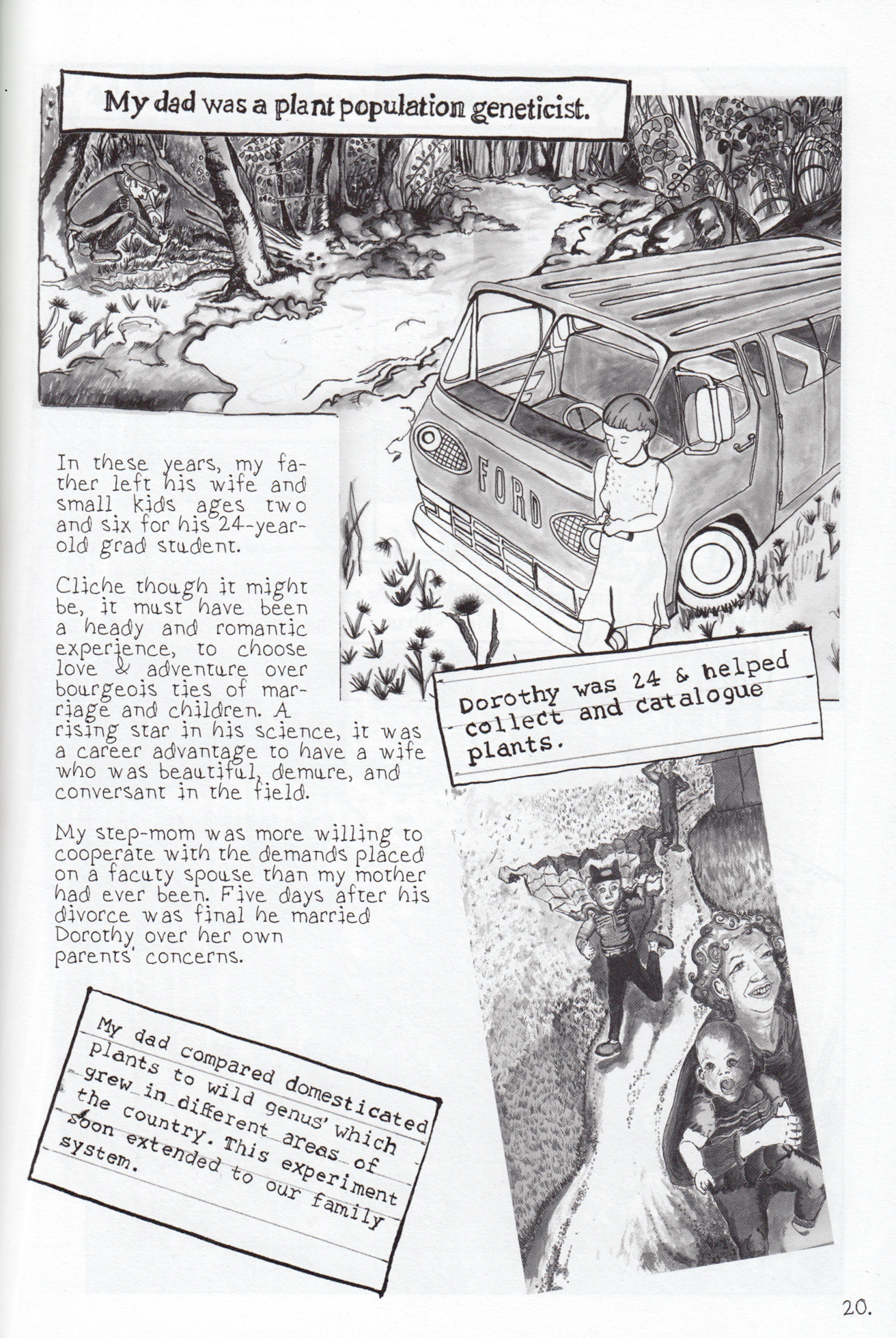
Good Morning Gorgon.  Ben Doane, story and layouts; Olivia Li, drawing; Jamie Koh, tones.  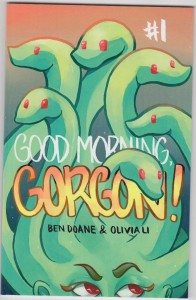 Okay, I didn’t read this in June, probably more like March, but I neglected to list it earlier, so here it is. Ben Doane’s comics have a  dreamy, loopy stream-of-conciousness charm. Good Morning Gorgon may be his most sustained effort that I’ve read, but that charm has not been sacrificed, with Olivia Li’s fluid juicy brushwork and lettering making the ride a visually smooth one. The Gorgon’s snakes are like mischievous, squabbling children. This turns a simple task like grocery shopping into a slapstick adventure, with a bickering brood slithering from her head, and the ever-present danger of turning her fellow shoppers to stone — and as for shampooing, you can imagine! Off-the-wall and loveable.
Okay, I didn’t read this in June, probably more like March, but I neglected to list it earlier, so here it is. Ben Doane’s comics have a  dreamy, loopy stream-of-conciousness charm. Good Morning Gorgon may be his most sustained effort that I’ve read, but that charm has not been sacrificed, with Olivia Li’s fluid juicy brushwork and lettering making the ride a visually smooth one. The Gorgon’s snakes are like mischievous, squabbling children. This turns a simple task like grocery shopping into a slapstick adventure, with a bickering brood slithering from her head, and the ever-present danger of turning her fellow shoppers to stone — and as for shampooing, you can imagine! Off-the-wall and loveable.
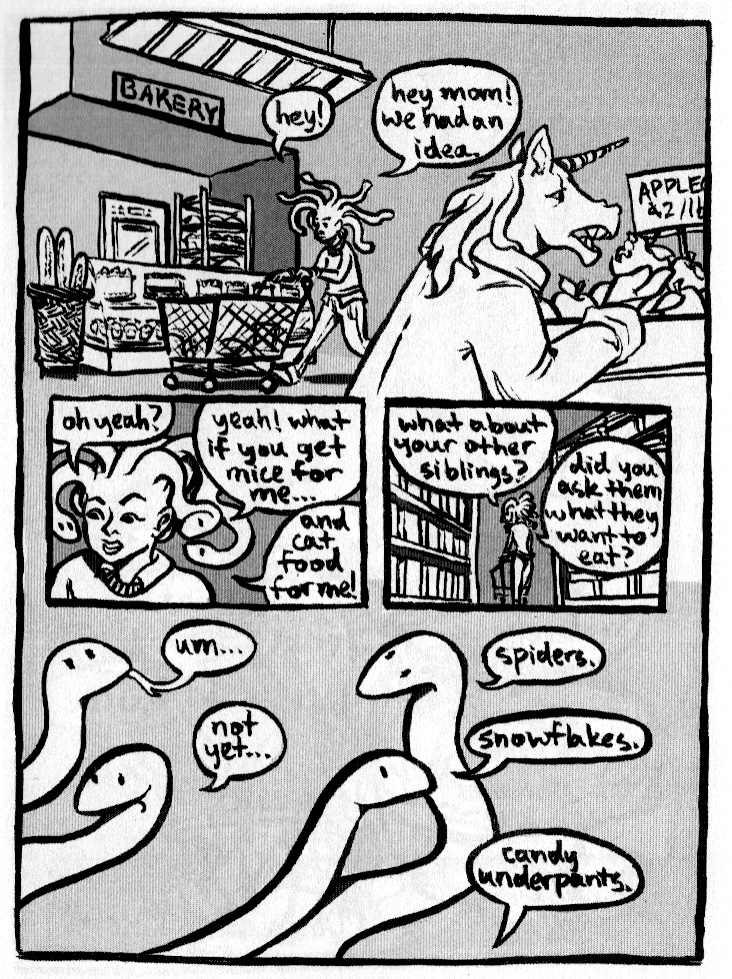
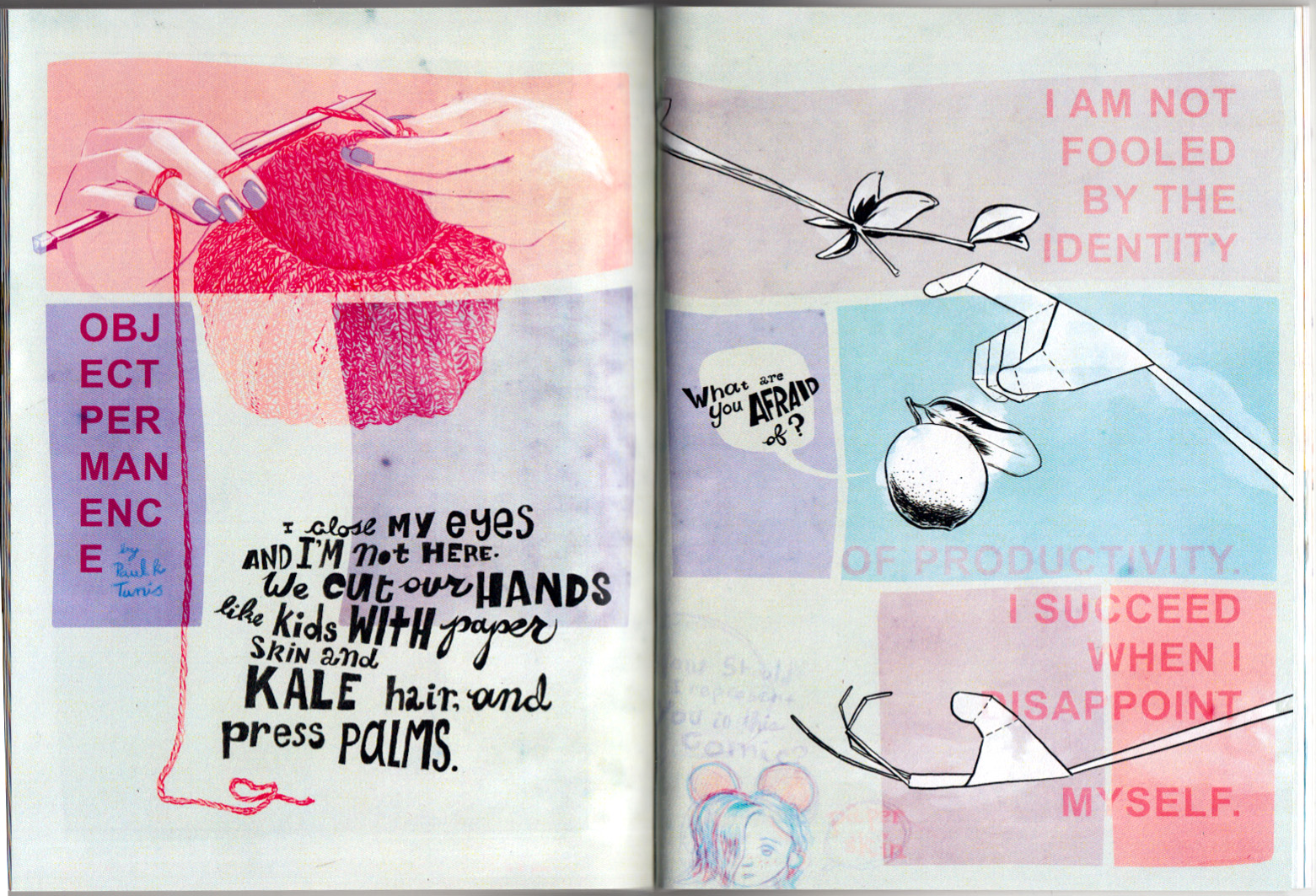
Inaction Comics No 1: Productivity. This beautiful little book is also one of the most intriguing and challenging comics anthologies I’ve read.
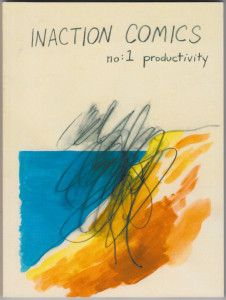
Editor Kimball Anderson’s aim is to create “a single story out of moments that float free of traditional storytelling,” around the theme of inaction. The different creators’ approach to this theme interact with one another, especially since several creators have pieces interspersed throughout the book. “Inaction” can be a stalemate between desire for action and internal obstacles; it can also be patience, waiting for seeds to grow; it can be meditation and concentration; it can even look like constant action, but action that simply repeats itself. The aesthetic of the collection leans toward poetry and abstration; the artists explore various configurations of words, images, colors and mark-making.
